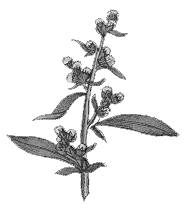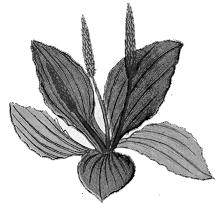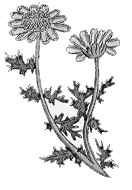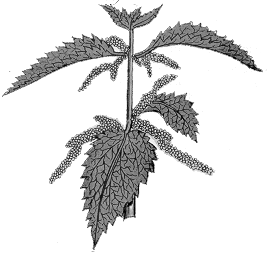Herbal Healing and Charms
Wort Cunning Herbal Smarts (wort or wyrt = herb + cunning = intelligence or skill)
(In Old English, a garden is a wyrtgeard, mugwort (artemisia vulgaris) is mucgwyrt, medowsweet is medowyrt, and any healing herb – which means most of them – is læcewyrt , a leech wort)
THE OLDEST surviving medical book in England is also the oldest herbal, for of course herbs were medicine in the middle ages. This is the Leech Book of Bald, (leech, “læce” in Old English means healer) compiled in Ælfred’s time or very shortly thereafter by a monk named Bald, and penned, in its surviving copy, between 924 and 946 by a scribe (almost certainly also a monk) named Cild. It gives recipes for herbal remedies using vervain, mugwort, plaintain, periwinkle (vinca minor), wood betony, violets, yarrow, and many other herbs still in medical use today. Among its formulations are some sent to King Ælfred by Elias, Patriarch of Jerusalem, to treat constipation, disorders of the spleen, and other maladies.
Anglo-Saxon medical practices were truly holistic, and sought to heal both body and spirit. A great deal of period herbalism concerns itself with charms and amulets to protect against evil influences, and even straightforward medical problems, say a slice from a seax or plough blade, were treated with a combination of practical and magical means. Wounds were often sung into to speed healing, and the afflicted (or their agents, if they were too ill to do so) ordered to perform certain magical rites – such as walking in a Moon-lit field – as part of the cure.
Some of the most illuminating relics from the age are the twelve metrical poems written down, in Old English, in tenth and eleventh century manuscripts. The titles of each Charm are telling: For Unfruitful Land, The Nine Herbs Charm, Against A Dwarf, For a Sudden Stitch, For Loss of Cattle, For Delayed Birth, For the Water-Elf Disease, For a Swarm of Bees, For Theft of Cattle, For Loss of Cattle, A Journey Charm, and Against a Wen (wart).
 |
 |
 |
 |
| Mugwort | Plantain | Camomile | Nettle |
The nine herbs in the second Charm are mugwort (the “oldest of herbs”), plantain (“mother of herbs”) lamb’s cress, cock’s-spur grass, camomile, nettle, crab-apple, chervil, and fennel. These are pounded to a powder, mixed with soap and the juice of an apple, and applied as a salve on the wound as the Charm itself is sung into the mouth, ears and then the wound of the patient.
Truly skilled herbalists or leeches were, as today, highly valued members of society. Many must have been monks and nuns, for these had the benefit of interpreting the various leech books handed down within their learned communities, but it is easy to imagine that any man or woman who showed above average insight and ability in administering herbs would have been considered the local healer. It is likely that all folk, even the humblest cottars and slaves, had rudimentary knowledge of herbs for first aid and as seasonal tonics. In The Circle of Ceridwen, Ælfwyn travels with her Simple Chest to her new home. Simples are singular, unblended collections of dried herbs. Ælfwyn would have been expected to understand their uses, and be ready to act as leech to her household – a challenging task when we consider the warriors her hall housed.
– Herbal Illustrations from Culpeper’s Complete Herbal & English Physician (1826)
If you are truly serious about learning medieval healing techniques, the definitive work in early healing and herbalism is Stephen Pollington’s Leechcraft: Early English Charms, Plantlore and Healing, AngloSaxon Books 2000. This scholarly and yet highly readable volume contains a wealth of information about English (and non-native) herbal materials, rituals, tree lore, and the original source books complied and used by Anglo-Saxon herbalists. Highly recommended.

Thank you for linking me here! I think I’ve got at least 6 of those herbs growing in my garden. Plantain, yarrow, vinca (sorcerer’s violet is a folk name), plus rue and sage. This is very enlightening, thank you for your meticulous research!
Hi. I used this information for a project and I have to do an MLA citation and I want to know the author and the month, date, and year of publication.
I am very interested in healing like this.. Where could I find your first book?
Right here on my website, by “Joining the Circle” – thank you, Molly!